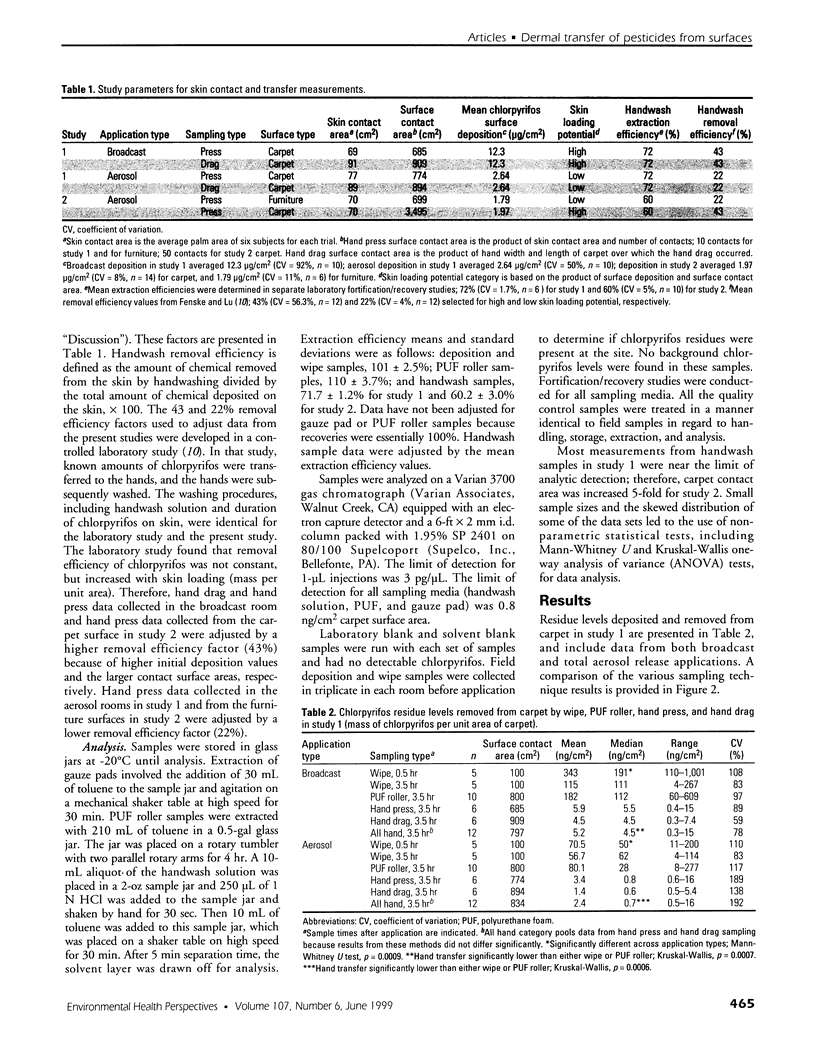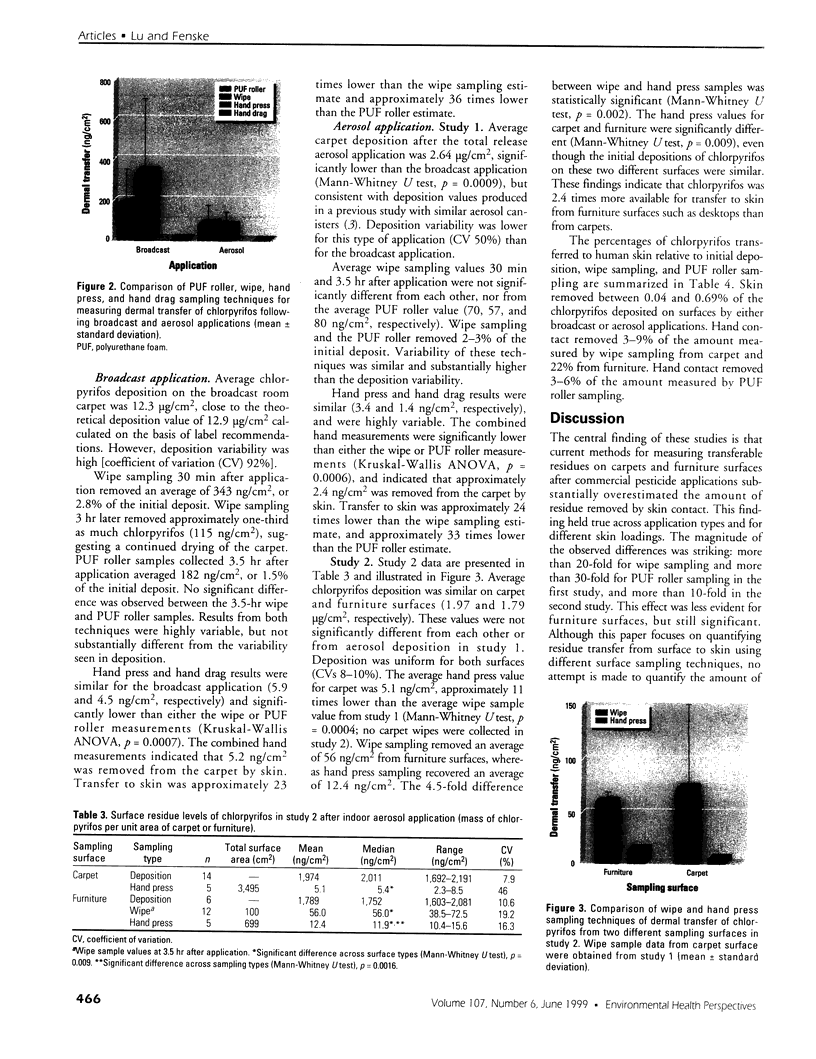Abstract
Indoor residential pesticide applications present the potential for human exposures, particularly for small children. Personal contact with target and nontarget surfaces can result in transfer of pesticides to the skin, but the magnitude of such transfer is uncertain. This research compared surface sampling techniques [wipe and polyurethane foam (PUF) roller] with the removal ability of human skin following broadcast and total aerosol release applications of Dursban (Dow Elanco, Midland, MI), a residential formulation containing the insecticide chlorpyrifos. Hands were washed immediately after surface contact, following a protocol that included a laboratory-generated adjustment factor to account for incomplete removal of chlorpyrifos from skin. Chlorpyrifos transfer was similar for hand press and hand drag techniques, averaging approximately 1-6 ng/cm2 of carpet contacted. These amounts represented < 1% of the amount of chlorpyrifos deposited on the surfaces 3.5 hr earlier. Chlorpyrifos transfer from carpet to skin was 23-24 times lower than for wipe sampling and 33-36 times lower than for PUF roller sampling (p = 0.0007 and p = 0.0006 for broadcast and aerosol applications, respectively). Hand press sampling removed approximately 4.5 times less chlorpyrifos from nontarget furniture surfaces (12 ng/cm2) than did wipe sampling (56 ng/cm2; p = 0.009). Chlorpyrifos residues on carpet were substantially higher after broadcast applications than after aerosol applications, but residues on such nontarget surfaces as furniture were substantially higher for the aerosol application. This study indicates that human skin removes substantially less residue from carpets and furniture than either conventional wipe or PUF roller sampling methods following residential pest control applications of chlorpyrifos. Although this paper focuses on quantifying residue transfer from surface to skin using different surface sampling techniques, no attempt is made to quantify the amount of chlorpyrifos residue that is subsequently absorbed.
Full text
PDF




Images in this article
Selected References
These references are in PubMed. This may not be the complete list of references from this article.
- Fenske R. A., Birnbaum S. G. Second generation video imaging technique for assessing dermal exposure (VITAE System). Am Ind Hyg Assoc J. 1997 Sep;58(9):636–645. doi: 10.1080/15428119791012423. [DOI] [PubMed] [Google Scholar]
- Fenske R. A., Black K. G., Elkner K. P., Lee C. L., Methner M. M., Soto R. Potential exposure and health risks of infants following indoor residential pesticide applications. Am J Public Health. 1990 Jun;80(6):689–693. doi: 10.2105/ajph.80.6.689. [DOI] [PMC free article] [PubMed] [Google Scholar]
- Fenske R. A., Curry P. B., Wandelmaier F., Ritter L. Development of dermal and respiratory sampling procedures for human exposure to pesticides in indoor environments. J Expo Anal Environ Epidemiol. 1991 Jan;1(1):11–30. [PubMed] [Google Scholar]
- Fenske R. A., Lu C. Determination of handwash removal efficiency: incomplete removal of the pesticide chlorpyrifos from skin by standard handwash techniques. Am Ind Hyg Assoc J. 1994 May;55(5):425–432. doi: 10.1080/15428119491018862. [DOI] [PubMed] [Google Scholar]
- Gurunathan S., Robson M., Freeman N., Buckley B., Roy A., Meyer R., Bukowski J., Lioy P. J. Accumulation of chlorpyrifos on residential surfaces and toys accessible to children. Environ Health Perspect. 1998 Jan;106(1):9–16. doi: 10.1289/ehp.981069. [DOI] [PMC free article] [PubMed] [Google Scholar]
- Kissel J. C., Richter K. Y., Fenske R. A. Factors affecting soil adherence to skin in hand-press trials. Bull Environ Contam Toxicol. 1996 May;56(5):722–728. doi: 10.1007/s001289900106. [DOI] [PubMed] [Google Scholar]
- Lewis R. G., Fortmann R. C., Camann D. E. Evaluation of methods for monitoring the potential exposure of small children to pesticides in the residential environment. Arch Environ Contam Toxicol. 1994 Jan;26(1):37–46. doi: 10.1007/BF00212792. [DOI] [PubMed] [Google Scholar]





